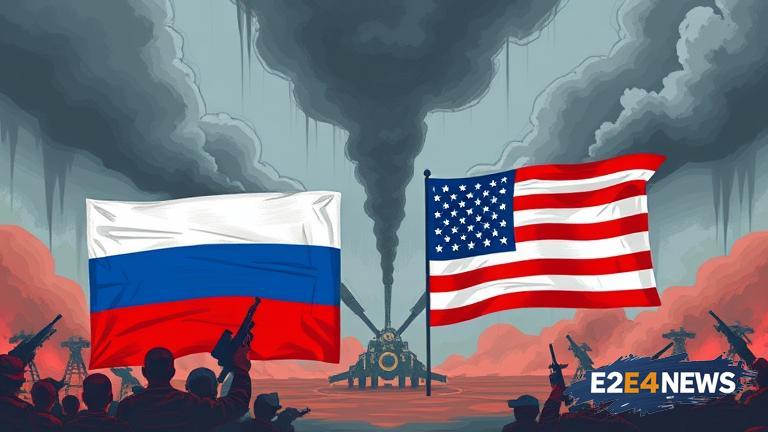The Russia-US nuclear treaty standoff has been escalating in recent months, with both nations accusing each other of violating the agreement. The treaty, known as the New Strategic Arms Reduction Treaty (New START), was signed in 2010 and limits the number of nuclear warheads and delivery systems that each country can possess. However, in recent years, both Russia and the US have accused each other of non-compliance, leading to a breakdown in negotiations. The US has accused Russia of developing new nuclear-capable missiles, while Russia has accused the US of deploying missile defense systems in Europe. The standoff has sparked concerns of a new arms race, with both nations investing heavily in their nuclear arsenals. The US has also withdrawn from the Intermediate-Range Nuclear Forces Treaty (INF), citing Russian non-compliance. Russia has responded by suspending its participation in the New START treaty. The escalating tensions have raised concerns among international leaders, with many calling for a return to diplomacy. The European Union has urged both nations to resume negotiations, while China has called for a multilateral approach to nuclear disarmament. The US and Russia have a long history of nuclear rivalry, dating back to the Cold War. The two nations have been engaged in a series of diplomatic efforts to reduce their nuclear arsenals, but the current standoff has raised concerns that these efforts may be unraveling. The New START treaty is set to expire in 2026, and there are concerns that it may not be renewed. The treaty limits the number of nuclear warheads that each country can possess to 1,550, and also limits the number of delivery systems, such as missiles and bombers. The US and Russia have both been modernizing their nuclear arsenals in recent years, with the US investing in new bomber aircraft and submarines, and Russia developing new missiles and submarines. The escalating tensions have also raised concerns about the potential for nuclear proliferation, with other nations potentially seeking to develop their own nuclear capabilities. The international community has been urging both nations to resume negotiations and to work towards a new agreement. The US and Russia have a number of other nuclear-related agreements, including the Strategic Arms Reduction Treaty (START) and the Treaty on the Non-Proliferation of Nuclear Weapons (NPT). However, the current standoff has raised concerns that these agreements may be at risk. The US and Russia have also been engaged in a series of diplomatic efforts to reduce tensions, including talks on strategic stability and nuclear security. However, these efforts have been hindered by the current standoff, and there are concerns that the situation may continue to escalate. The international community is watching the situation closely, with many nations urging both the US and Russia to resume negotiations and to work towards a new agreement. The potential consequences of a nuclear arms race are severe, and the international community is urging both nations to take a step back and to work towards a diplomatic solution. The US and Russia have a long history of cooperation on nuclear issues, and there are hopes that they can return to this cooperative approach. However, the current standoff has raised concerns that this may not be possible, and that the situation may continue to escalate. The US and Russia must work together to address the current standoff and to prevent a new arms race. This will require a return to diplomacy and a commitment to reducing nuclear tensions. The international community is urging both nations to take this approach, and to work towards a new agreement that can reduce the risk of nuclear conflict.
